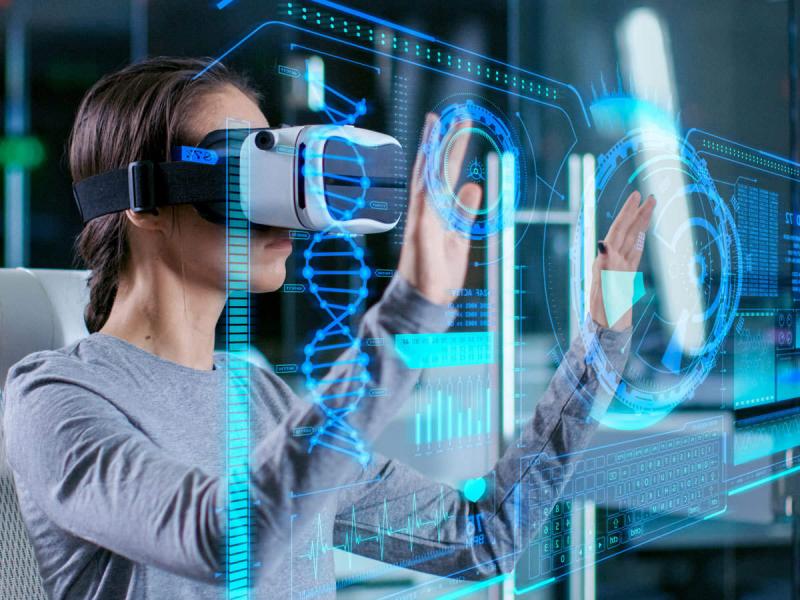
Top Ten Things – Virtual Reality (VR) and Augmented Reality (AR) are evolving fast. They’re no longer just sci-fi experiments or gamer obsessions. Today, these immersive tools are revolutionizing real-life experiences. In fact, from education to tourism, their impact is growing rapidly. Consequently, businesses are adopting them for training and remote support. At the same time, artists and museums use them for immersive exhibitions. The boundary between real and virtual keeps getting blurred. AR overlays digital content onto your real environment. Meanwhile, VR replaces your surroundings entirely with another world. These tools aren’t limited to entertainment anymore. Instead, they’re shaping how people learn, work, and connect globally. Let’s explore ten powerful examples of this digital revolution.
To begin with, teachers can now take students around the world virtually. VR tools let learners walk through pyramids in Egypt. Alternatively, they can swim beside marine life without getting wet. These immersive lessons significantly increase engagement and retention. As a result, education becomes interactive instead of textbook-bound. Students explore distant cultures and time periods with headsets. Platforms like Google Expeditions offer hundreds of destinations. In turn, learning geography, history, or science becomes more visual. Even home-schooled students benefit from these innovations. Clearly, knowledge becomes an experience instead of plain information.
“Read More: 5 Keys to Happy Relationship with Your Partner or Girlfriend on the Weekend”
Next, navigation has been reimagined through AR overlays. Rather than checking static maps, users follow real-time arrows. Cities like Tokyo and New York integrate AR in transit hubs. As a result, AR glasses show directions, landmarks, and transport options. This makes urban exploration easier for tourists and locals alike. Furthermore, smart cities adopt AR for better traffic management. Drivers receive alerts and data directly in their visual field. Thus, this enhances safety while reducing distractions and confusion. Eventually, seamless movement through physical and digital space becomes standard. The future of cities will be layered with digital assistance.
In the field of healthcare, medical students now practice on virtual bodies. VR lets them simulate complex surgeries without any real risk. Because of this, mistakes become learning opportunities rather than tragedies. Meanwhile, AR supports surgeons during real operations by projecting organs. In doing so, it improves surgical accuracy and precision. Some hospitals even use AR headsets in live procedures. Consequently, patients experience faster recoveries and fewer complications. In addition, rural areas benefit from these tools for training. Clearly, digital tools are bridging the healthcare gap worldwide.
Likewise, companies are now building virtual offices for remote teams. Employees meet in shared digital spaces using VR avatars. Compared to Zoom calls, these meetings feel more immersive. As a result, remote work becomes more engaging and human. Moreover, AR is used for remote assistance in technical fields. Experts can guide workers by annotating real-time visuals remotely. Therefore, this reduces downtime and improves support across distances. Collaboration across borders becomes faster and more effective. Businesses of all sizes now embrace this hybrid work model.
Before booking a trip, users can preview destinations in VR. In fact, walking down the streets of Rome is now possible virtually. Hotels also offer VR previews of rooms and services. Meanwhile, tourism boards use AR apps to add digital stories. For instance, monuments tell their history when scanned by your phone. Consequently, this enriches travel experiences even before departure. Additionally, virtual travel becomes vital for people with disabilities. Everyone can now access world wonders from home. Ultimately, travel becomes more inclusive and visually immersive.
On the consumer side, AR is revolutionizing how people shop. Shoppers now try clothes or makeup without touching anything. For example, AR mirrors and apps simulate the appearance in real-time. Furniture retailers allow users to place virtual sofas in rooms. Because of this, customers gain confidence in their purchases. In addition, brands build loyalty through interactive technology. Shopping becomes a blend of convenience and entertainment. Furthermore, retail evolves into a more dynamic, customer-centered experience. Clearly, AR is shaping the future of commerce.
In entertainment, artists now perform to global audiences in VR. Fans attend concerts from home using headsets or even phones. Consequently, events are no longer limited by geography. Platforms like Wave and Horizon Host offer immersive shows regularly. The audience can interact, cheer, and even dance together. Moreover, some concerts include AR effects synced with the music. As a result, the concert becomes a multisensory experience. Ticket sales now grow through digital access and hybrid events. In short, the music industry is evolving with VR/AR integration.
Cultural institutions have embraced AR to enhance learning. Instead of printed brochures, visitors use AR guides. Simply pointing a phone at artifacts triggers multimedia stories. For example, ancient ruins come alive with animation overlays. As a result, understanding deepens, especially for young visitors. Museums in Rome, Paris, and Beijing use this widely. Furthermore, it helps make exhibitions inclusive and multilingual. Passive observation is now replaced by interactive discovery. This strengthens the bond between culture and technology.
Mental health professionals now use VR to treat anxiety and phobias. Patients confront fears in a controlled, safe simulation. Additionally, VR helps veterans cope with PTSD symptoms effectively. Clinics also use AR to teach emotional awareness and regulation. Meditation apps create calming digital environments instantly. As a result, therapy becomes more personalized and engaging. Access increases for people in rural or underserved regions. Especially for younger patients, immersive therapy shows strong outcomes. Therefore, digital tools support mental wellness globally.
Finally, industries use VR for hands-on skill training safely. Workers in aviation, construction, and mining benefit from simulations. Trainees learn procedures without risking real-world harm. At the same time, AR guides field workers in real-time tasks. For instance, step-by-step overlays reduce mistakes and boost efficiency. Some companies use AR headsets during machine operation directly. As a result, training becomes continuous and adaptive. This leads to safer, faster, and more skilled labor forces. Clearly, digital reality tools are shaping the future of work.